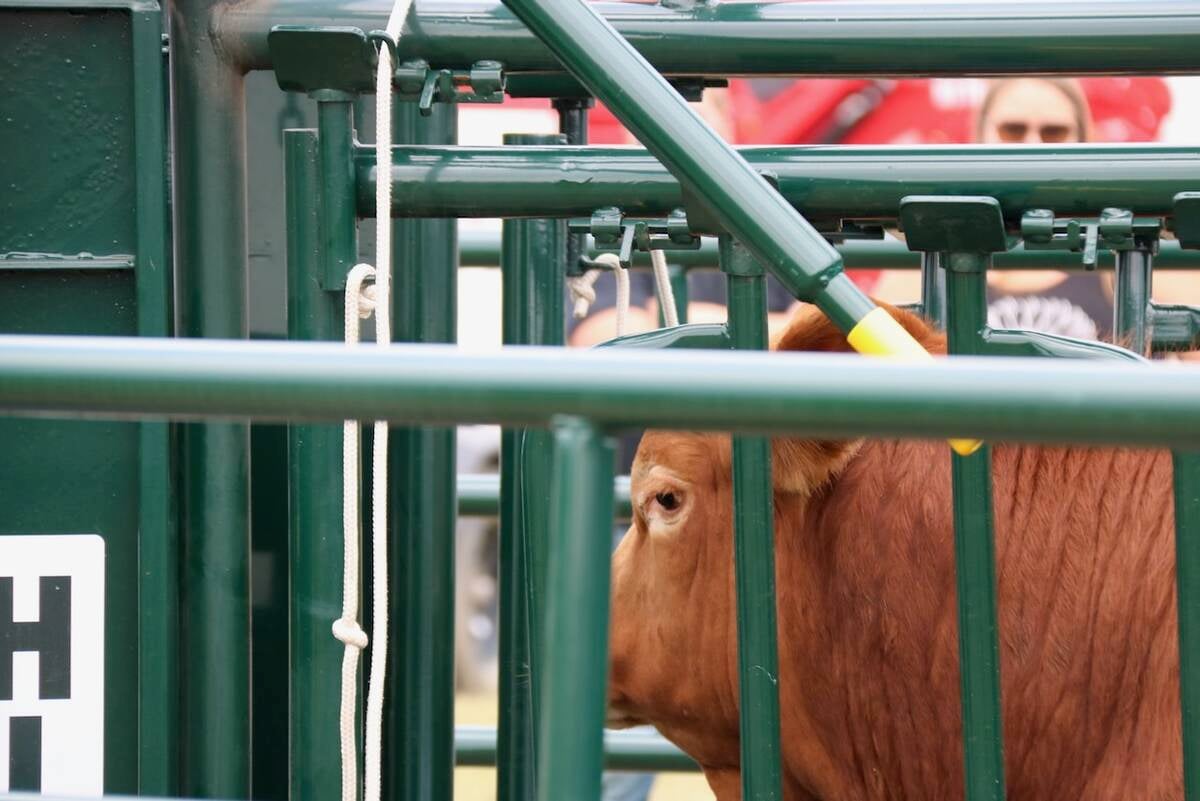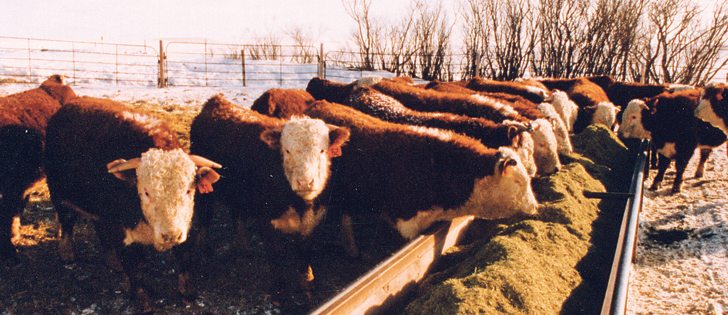Data from the country’s detailed traceability system is used to make genetic improvements in the herd
EDMONTON — A relentless struggle with variable profitability is often the last straw for beef producers, whether they are in the United Kingdom or North America.
“The problems confronting the U.K. beef and dairy industry are extraordinarily similar to those confronting North America, particularly here in Canada,” said Mike Coffey, a genetic researcher at Scotland’s Rural College.
Processors are concerned about dwindling supplies as more producers exit the business, he said at the Livestock Gentec annual meeting held in Edmonton in late fall.
Those who remain are looking for creative ways to gain profitability.
Read Also

Good handling equipment a must on cattle operations
It’s important for the safety of producers and everyone else dealing with their stock that handling equipment is functional and safe.
One approach is to find more efficiency with crossbreeding and getting cattle to market sooner.
The average age at slaughter is around 24 months, but costs escalate if producers keep fattening cattle beyond that point.
“It costs more to keep these animals after that point than they are worth,” he said.
“Age at slaughter is a source of huge losses. The speed from which you can get animals from a calf to slaughter is of the essence in terms of controlling profitability.”
The dairy sector provides half of the British beef supply. The top three most common dams for the beef sector are the Holstein at 46 percent followed by Limousin and Angus.
Until a few years ago, dairy farmers destroyed bull calves at 24 hours of age because they had no market value. A retailer backlash against the practice forced them to find new uses for these calves and farmers are now breeding half their dairy cows to beef bulls, he said in an interview.
The Holstein and cross-bred calves are weaned at 12 weeks and may be finished on the farm or sold to producers who grow them out.
“A lot of them finish on grass because they think grass is better. If they feed them grain, they get rid of them quicker,” he said.
“My argument is, it is not a question of whether you feed them grain or whether you feed them grass. You should feed them so their profitability is maximized.”
Many of these cattle are born in the spring and kept over two winters, living indoors because of inclement weather.
“In the U.K., the second winter is the killer for profitability,” he said.
“If you have to bring them in and feed them in the second winter, that is the end of all your profit.”
Finding and raising efficient animals is one way to reduce time on feed.
A four-year project funded by the government works with co-operating farmers, who collect feed intake and efficiency data using the Grow Safe monitoring system. They are also submitting phenotypic information that can be used to build genotypes.
Genomics in the U.K. have taken off quickly in all the main livestock species and sharing of information has been excellent among re-searchers and producers who adopt the new technology.
Data collection is aided in part by the British cattle movement service, a highly detailed traceability system constructed as a result of the BSE epidemic. All cattle are registered, and records are maintained on births, deaths, breed, sex, pedigree and movement.
Video image analysis and carcass traits such as weight, fat and conformation from abattoirs are also added to the database to further genetic analysis.
One of the outcomes of this work is the development of breeding values on Holstein bulls for their beef characteristics.
This could introduce muscularity traits to dairy cattle headed for the beef sector.
Milk yield declined, but the animals’ general robustness im-proved.
“A cow that is slightly more muscular survives longer and has less mastitis and is more fertile,” Coffey said.
Mid-infrared technology is also being used to assess milk for fat and protein components. This information has also been retained to predict fatty acid content, energy balance, fertility and the risk for ketosis and acidosis.
The work involves researchers in the U.K., Ireland and Canada.
Limousin is the most popular beef breed in the U.K., and the breed society is working on genomic improvement. Work is also ongoing with some of the largest British meat processors to reward producers for better beef.
There is no organized recognition of meat quality in the U.K.
The Limousin Breed Society helps farmers collect genetic information on their animals on the farm. The information is then published on the top bulls.
“The implications of that is that there is a large benefit to the industry,” he said.
“Large numbers of records are now used on economically important traits.”
Producers can select for carcass quality and specific changes to the animal to make it stretchier for a bigger strip loin.
“Limousin breeders cannot only select for carcass; they can actually change the shape of their animals,” Coffey said.
“The Limousin Breed Society has spent the last four years meeting regularly with the processors, and that activity itself is beneficial as each side becomes more aware of how things work on the other side,” he said.
“You end up with much better signalling with different parts of the supply chain.”
The discussion has moved on to how to make this information available to farmers so they can make further genetic improvements in feed efficiency, female fertility and meat quality.
















